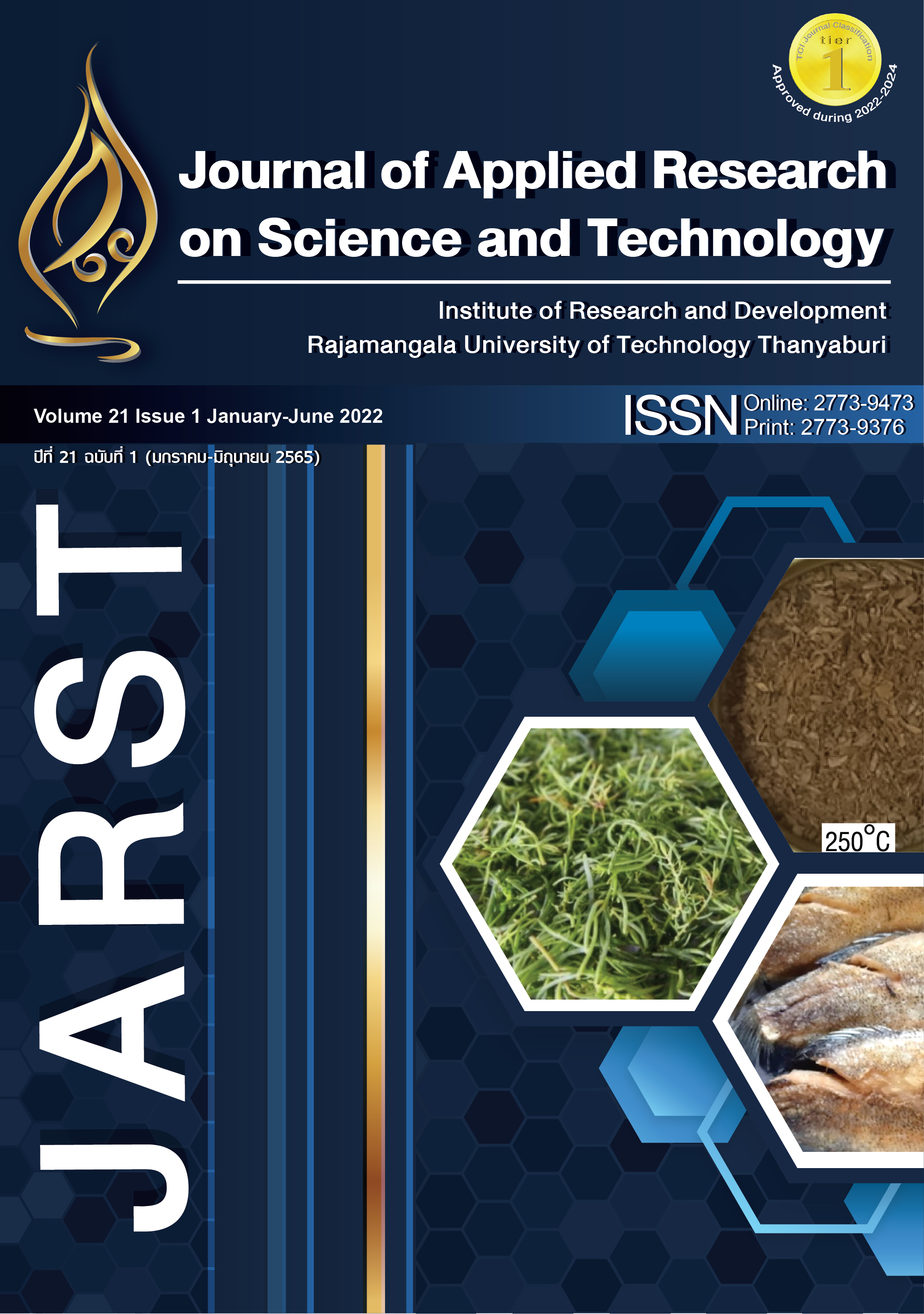Comparison of Methods for Analysis of the Air Quality: A Case Study of Alternative Energy for Biogas in Suphanburi Province
Main Article Content
Abstract
This research examines the comparison of 96 monthly air quality data from biogas alternative energy in Suphan-Buri province for a total of 8 years from January 2010 to December 2017. By dividing the biogas composition data for analysis to the research objectives by dividing the data into two sets; namely the first set of data to create a model for forecasting trends in air quality to find suitability and the second set of information to compare the performance of air quality forecasting. The air quality forecasting using four time-series data forecasting methods; namely the Box-Jenkins Method (BJ), the Holt's Exponential Smoothing Method (Holt), the smoothing method with Brown's Exponential Smoothing Method (Brown) and the Damped trend exponential smoothing method (Damped). The composition of biogas is separated into 3 types of gases, namely methane (CH4), carbon dioxide (CO2) and hydrogen sulfide (H2S) to determine the suitability of the forecast model. The results of the forecast model study by comparing the root mean square errors (RMSE) showed that the Damped method was suitable for CH4 gas, the BJ method was suitable for CO2 gas, and the Holt method was suitable for H2S gas, respectively. The resulting model was then used to find future forecast values. It was found that the Damped method was able to generate a CH4 gas data forecast model that was closest to the true value.
Article Details

This work is licensed under a Creative Commons Attribution-NonCommercial-NoDerivatives 4.0 International License.
References
Manmin M. Time series and forecasting. 1st edition. Bangkok: Four Printing Company. 2006.
Lorjeerachunkul W, Chittawet J. Forecasting techniques. 1st edition. Bangkok: Academic Document Promotion Project National Institute of Development Administration, 2005.
Ket-iam S. Forecasting techniques. 2nd edition. Songkhla: Thaksin University. 2005.
Taesombat S. Quantitative forecasting. 1st edition. Bangkok: Kasetsart University. 2006.
IBM Corporation. Brown’s Exponential Smoothing (TSMODEL Algorithms) [Internet]. Availability from: https://www.ibm.com/support/knowledgecenter/SSLVMB_22.0.0/com.ibm.spss.statistics.algorithms/alg_tsmodel_models_exsmooth_browns.htm.
Somsila C, Chiewwattana S, Sunat K. Mixed model for air quality forecasting Case study of air quality data in Thailand. The 11th Annual Graduate Research Research Conference. 2010. p. 247-58.
Chuentawat R. Prediction of dust concentrations as small as 10 microns with a neural network in combination with an autoregistration model. Burapha Science Journal. 2017;22(3):519-37.
Kiratiwiboon K. Comparison of forecasting methods between the Box-Jenkins method. Simple seasonal exponential smoothing method and combined forecasting method. For forecasting the average monthly temperature in Bangkok. Burapha Science Journal. 2013;18(2):149-60.


